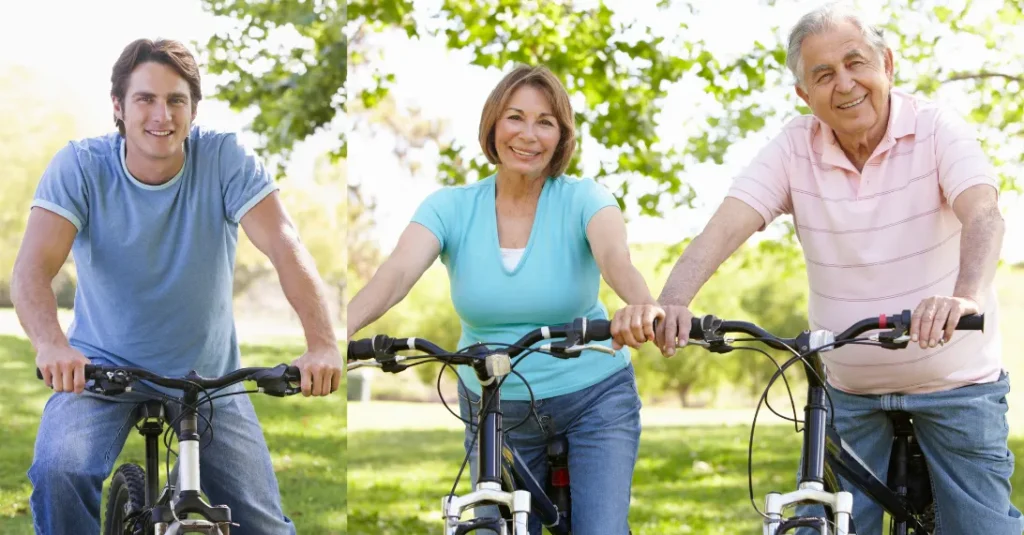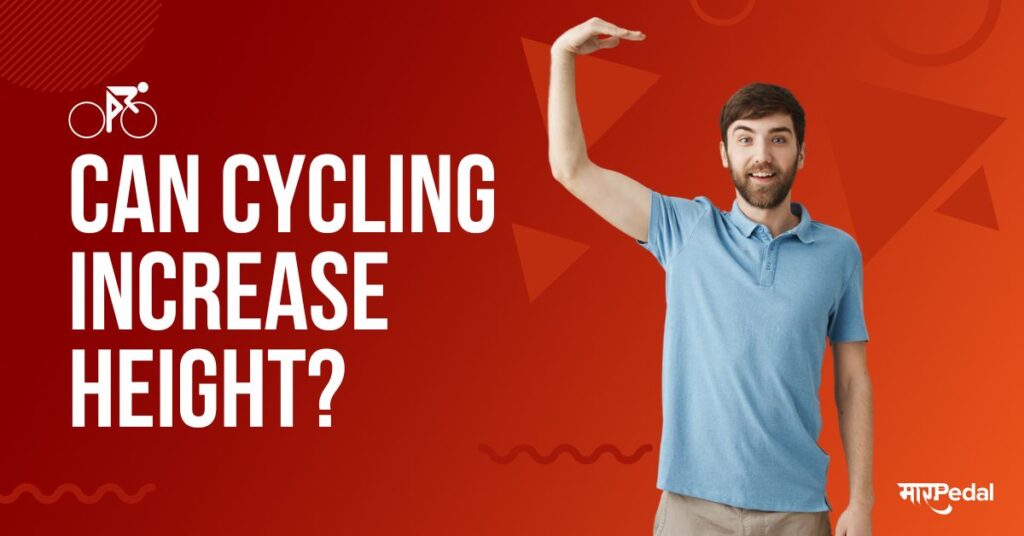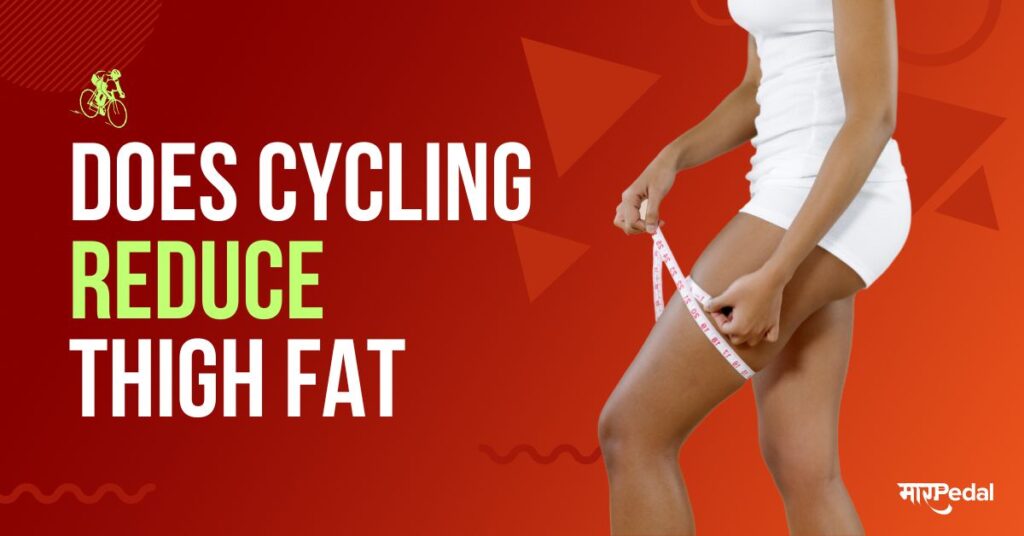
Cycling is a sport that people of all ages can enjoy. However, age can play a significant role in determining average cycling speeds. Understanding how age affects cycling speed can help cyclists set realistic goals and track their fitness progress.
An Overview of Average Cycling Speeds
Before diving into the specifics of age, it’s helpful to have a general sense of average cycling speeds. Here’s a quick overview:
- Casual cyclists often average between 10-15 mph on flat ground. This group includes occasional riders and those cycling for leisure or transportation.
- Regular cyclists can expect to average between 15-20 mph on flat roads. This includes cyclists riding several times per week.
- Competitive amateur cyclists average between 20-28 mph on flat roads depending on fitness level.
- Elite professional cyclists exceed 28 mph averages during races and time trials.
These ranges provide a baseline, but age can shift gears when it comes to your personal average speeds.
Average Cycling Speed by Age Group
| Age Group | Average Speed Range | Key Factors Affecting Speed |
| Children Under 12 | 5-15 mph | – Rapidly improving with growth spurts- Lack long distance strength |
| Teenagers (13-19) | 10-20 mph | – Increased aerobic capacity- Improving leg strength- Well-suited for 20-30 mile rides |
| Young Adults (20-39) | 15-25 mph | – Peak cardiovascular performance around 30- Ideal for speed training and long distances |
| Middle-Aged Adults (40-64) | 12-22 mph | – Gradually declining aerobic capacity and leg strength- Flexibility may decrease around 50 |
| Seniors (65+) | 8-20 mph | – More rapid declines in aerobic capacity and leg strength- Balance reactions start to slow<br>- Better suited for 20-50 mile rides |
Your average cycling speed tends to change across the lifespan due to variations in aerobic capacity, muscle strength, and flexibility. Here’s how age impacts averages:

Children Under 12
- Average speeds: 5-15 mph
- Capabilities are rapidly improving during growth spurts.
- Lack strength for high speeds over long distances.
- Better suited for short rides under 10 miles.
Teenagers (13-19)
- Average speeds: 10-20 mph
- Increased aerobic capacity compared to younger kids.
- Leg strength continues to improve.
- Stamina increases during teen years.
- Well-suited for 20-30 mile rides.
See also: How Long Does It Take to Bike 3 Miles?
Young Adults (20-39)
- Average speeds: 15-25 mph
- Peak cardiovascular performance occurs around age 30.
- Leg strength plateaus around age 25.
- Ideal for speed training and distance cycling.
- 40-100 mile rides are achievable for fit young adults.
Middle-Aged Adults (40-64)
- Average speeds: 12-22 mph
- Aerobic capacity and leg strength gradually decline.
- Flexibility may also decrease around age 50.
- Still able to ride long distances but may need more recovery time.
- 50-80 mile rides are realistic goals.
Seniors (65+)
- Average speeds: 8-20 mph
- Aerobic capacity and leg strength decrease more rapidly.
- Flexibility continues to decline.
- Balance reactions may start to slow as well.
- Better suited for 20-50 mile distances.
As shown above, average cycling speed does tend to decline with age, particularly after age 40. However, staying active can help you maintain fitness and enjoy cycling at any age.
Factors Impacting Cycling Speed by Age
While age-related physical changes do impact average cycling speed over time, several other factors come into play:
- Fitness level – Active seniors can outpace casual teen and adult riders. Regular training maintains fitness.
- Bike weight – Heavier bikes slow children and seniors down on climbs. Lightweight bikes improve speed.
- Terrain – Hills and headwinds require more strength, impacting kids and older riders more.
- Health conditions – Chronic illness, injuries and pain affect cycling performance.
- Nutrition – Proper hydration and diet provides energy for better speed.
- Bike maintenance – Mechanical issues like flat tires slow any rider down.
Maximizing fitness, minimizing bike weight, smart route choices, healthy habits, and bike care can help compensate for some age-related declines in speed.
Optimizing Your Cycling Speed at Any Age

While age impacts average cycling speed, riders of all ages can take steps to bike at speeds that challenge yet suit them:
- Do regular cardio – At least 3 days a week of swimming, running, or cycling builds cardiovascular fitness to boost speed and endurance.
- Include strength training – 2 days a week of lifting weights, plyometrics, or bodyweight exercises keeps leg muscles strong.
- Stretch regularly – Yoga, Pilates or daily stretching maintains flexibility and balance needed for cycling.
- Use proper gearing – Having appropriate gears for your fitness and terrain makes it easier to sustain faster speeds.
- Fuel properly – Eating carbohydrates and protein before and during long rides provides energy for maintaining speed.
- Stay hydrated – Drinking fluids regularly prevents dehydration and fatigue that can slow you down.
- Check bike fit – Ensure your seat height, handlebar position and bike frame size are optimized for your body.
- Analyze your progress – Use a cycling computer or fitness tracker to monitor your average speeds and progress over time.
No matter your age, setting realistic yet challenging speed goals and training diligently can help you become a stronger, faster cyclist. Just be patient and listen to your body as you improve.
FAQs
How does age affect cycling performance?
Age can have a significant impact on cycling performance. Generally, VO2 max and power output peak between ages 20-35 years old. After age 35-40, these measures of performance slowly decline. However, cyclists can still maintain a high level of fitness and performance well into middle and older age with continued training. Technique and experience can also help compensate for some loss of raw power.
What is a good FTP for a 60 year old man?
A functional threshold power (FTP) between 200-250 watts would be considered good for a recreationally competitive 60 year old male cyclist. Pro level 60+ racers might have FTPs over 300 watts. But any FTP over 225 watts is respectable for a committed 60 year old rider.
At what age do cyclists peak?
Most professional cyclists peak between ages 27-33. This period represents a balance of continued physical development, training experience, and mental maturity. However, many amateur cyclists can continue improving into their late 30s and 40s with focus on goals and consistency in their training.
Conclusion
In the end, average cycling speed is correlated with age due to the changes in aerobic capacity, muscular strength and flexibility that naturally occur across the lifespan. However, understanding these age-related shifts can help you set goals tailored to your current fitness and abilities. With smart training, an optimized bike, and a passion for riding, cyclists of all ages will get satisfaction out of being active on two wheels.






